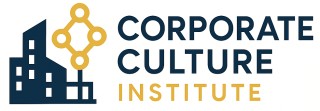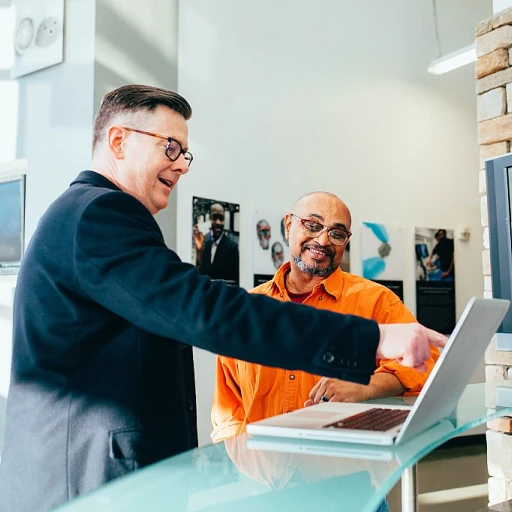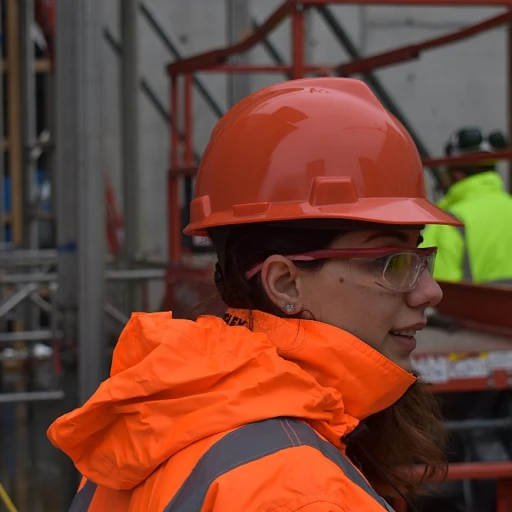
Understanding the Foundations of Corporate Culture
Foundational Elements of a Successful Culture
Establishing a smart workplace requires a deep understanding of corporate culture's foundational aspects. A cohesive culture drives productivity and innovation, key components for thriving in a contemporary office environment. This foundation sets the tone for everything from space management to tools used within the office. The modern work environment often leans towards a hybrid system, combining remote and on-site work. Companies need to implement a workplace strategy that caters to both setups without compromising employee experience. A blend of flexibility and structure ensures that employees work in a way that optimizes their productivity.Essential Factors in Culture Development
- Communication: Unified communications tools are essential in facilitating clear and effective communication across teams, encouraging collaboration in real time, whether in meeting rooms or through video conferencing.
- Inclusivity and Flexibility: A hybrid workplace caters to diverse employee needs, promoting a sense of belonging and inclusivity that nurtures a positive workplace experience. Offering options like desk booking allows employees to navigate their workspaces efficiently.
- Technology Integration: Implementing the right workplace solutions is crucial. Technology such as smart workplace products and digital transformation tools can streamline processes, as explained in detail in this article about thriving in elite offices.
- Employee Engagement: Encouraging employees to engage meaningfully with their work increases overall satisfaction and drive. Consequently, such engagement feeds into productivity and innovation initiatives within the company.
The Role of Leadership in Shaping a Smarter Workplace
Leadership's Influence on a Smart Workplace Environment
The role of leadership in shaping a smarter workplace is crucial, as they establish the tone and guide the culture that navigates the organization's journey towards an intelligent work environment. Leaders are like architects, designing and implementing strategies that enhance productivity and foster innovation. A key responsibility is balancing flexibility and structure to adapt to the dynamics of modern hybrid workplaces.
Success in creating a smarter workplace begins with understanding the tools and resources needed to support a productive atmosphere. Effective space management and strategic planning can transform traditional office settings into smart workplaces that promote collaboration and efficiency. Leaders should spearhead initiatives for a cohesive workplace strategy that integrates technology, such as video conferencing systems, to unify communications and enhance the employee experience.
Adopting digital transformation techniques allows leaders to facilitate real time interactions and promote seamless operations. This includes optimizing meeting rooms and utilizing desk booking systems for better resource management. Embracing a hybrid work model is an essential step in enhancing workplace intelligence, bringing together the best of virtual and physical work environments. Many successful organizations prioritize employee engagement as a core element in cultivating a forward-thinking culture.
Another critical aspect of leadership is fostering an atmosphere of continuous learning. Encouraging teams to read industry insights and access video-based learning tools can bolster individual and team growth. Leaders should leverage employee feedback mechanisms to address concerns and drive real solutions that optimize productivity and well-being.
In conclusion, leadership plays a pivotal role in transitioning to a more intelligent workplace environment. By integrating innovative practices and adopting a proactive approach, leaders can ensure that their organizations stay ahead in the competitive landscape, optimizing both employee satisfaction and overall productivity. For further insights into the strategic maneuvers that can align leadership with corporate success, consider delving into the article on understanding the dynamics of voluntary separation schemes.
Technology's Impact on Workplace Intelligence
The Influence of Technological Advancements on Workplace Intelligence
In the pursuit of a smarter workplace, technology plays an undeniable role in sculpting a more efficient office environment. The advent of digital tools and solutions has transformed how teams collaborate and how companies manage their operations. Across industries, the integration of advanced technologies has created hybrid workplaces that are more adaptive and responsive. A key aspect is the implementation of space management technologies, which enhance productivity by optimizing the use of office real estate. This includes the use of smart desk booking systems and meeting rooms that allow employees to schedule and manage spaces efficiently. By streamlining room booking processes and integrating unified communications, companies foster an environment where employees can read and react to meeting demands in real time. Furthermore, workplace strategy now often includes digital transformation initiatives that aim to create more intelligent environments. These initiatives involve the deployment of tools like video conferencing and workplace solutions that facilitate hybrid work models. Bridging the gap between physical and virtual workspaces, video conferencing enables seamless communication, whether teams are working remotely or in-office. Moreover, premium products that allow for real-time collaboration and communication are game-changers. They enhance the overall workplace experience by providing a platform for employees to engage with one another effortlessly, no matter their location. As life and work continue to intertwine, maintaining productivity and a robust employee experience becomes easier with these technological advancements. While adopting technology is critical, companies must recognize that technology should serve as an enhancer rather than a replacement. The foundation of a smarter workplace is still built on strong leadership and employee engagement, and technology should complement these elements rather than overshadow them. For further insights on how companies navigate the challenges of integrating technology and management in corporate culture, you can read the Navigating the Global Management Challenge Model in Corporate Culture.Employee Engagement and Its Influence on Workplace Intelligence
Engaging Employees for an Intelligent Workspace
Employee engagement is a crucial factor that can significantly influence the intelligence of a workplace environment. When employees are more engaged, they tend to be more productive, innovative, and committed to the organization's goals. Creating a smart workplace requires an understanding of how engagement contributes to both individual and collective workplace success.- Promoting a Collaborative Work Environment:
- Implementing Advanced Workplace Solutions:
- Enhancing Employee Experience with Technology:
- Cultivating a Feedback-rich Organizational Culture:
Balancing Flexibility and Structure for Optimal Productivity
Finding the Right Balance for Workplace Success
In a smart workplace environment, striking a balance between flexibility and structure is crucial for optimal productivity. A hybrid work model allows employees the flexibility to choose where and how they perform their tasks, leading to enhanced job satisfaction and increased motivation. However, too much flexibility can potentially disrupt team dynamics, workflows, and deadlines.
Space management plays a vital role in this balance. Providing adaptable work environments, such as shared meeting rooms and desk booking systems, accommodates varying work styles and needs. With advanced tools like video conferencing and unified communications, teams can maintain a high level of collaboration, irrespective of their physical location. Whether it’s within a physical office or a hybrid workplace, seamless integration of digital transformation tools is essential.
- Workplace Solutions: Implementing smart workplace solutions involves adopting digital tools that allow real-time collaboration and productivity tracking. These can include video conferencing platforms and productivity management apps that keep employees aligned with organizational goals.
- Employee Experience: A premium workplace experience is about creating a supportive work environment. Offer spaces that foster creativity, alongside rooms equipped with cutting-edge technology products to enhance the employee experience.
- Hybrid Workplace Strategy: An effective hybrid strategy allows for customizable work arrangements, which support both remote and in-office work. This requires thoughtful planning around key features such as conference room availability, desk booking, and reliable communication channels.
The key to a smarter workplace is management’s ability to learn and adapt to these new models. By evaluating employee needs, leveraging a hybrid approach, and implementing real solutions aligned with company objectives, organizations can nurture a balanced ecosystem that leads to superior workplace productivity.
Measuring Success in a Smarter Workplace
Indicators and Metrics to Gauge Progress
As organizations strive to foster a smarter workplace, it becomes essential to establish indicators and metrics to gauge progress and measure success. Effective assessment of the work environment not only ensures that strategies align with business goals but also enhances the employee experience. By focusing on key features, such as space management, workplace solutions, and video conferencing, companies can track and optimize their efforts.
Evaluating Employee Engagement and Productivity
Employee engagement is a pivotal element in determining the success of a smarter workplace. Companies can utilize tools such as real-time feedback and pulse surveys to measure engagement levels. Additionally, tracking productivity metrics, like task completion rates and project outcomes, helps in understanding how well the hybrid work model is functioning. By examining these aspects, management can derive insights on refining workplace strategies.
The Role of Technology in Measurement
Technology plays a crucial role in measuring the effectiveness of a smart workplace. With products like unified communications and desk booking systems, organizations can collect valuable data on usage patterns. Real-time data from these tools provides insights on space utilization, helping in the adjustment of hybrid workplace strategies.
Creating Benchmarks for Long-term Success
A critical component of measurement is the establishment of benchmarks for long-term success. Comparing performance data against established standards provides a clear indication of progress. Regularly revisiting these benchmarks ensures that solutions remain relevant to the evolving work environment and continue to support optimal productivity.
Continuous Learning and Adaptation
Constant evaluation and adaptation are necessary to maintain a smart workplace. Learning from real instances and feedback enables teams to implement strategic changes effectively. By embracing a culture of continuous improvement, organizations can ensure that workplace intelligence continues to evolve and meet the needs of employees and the company as a whole.













